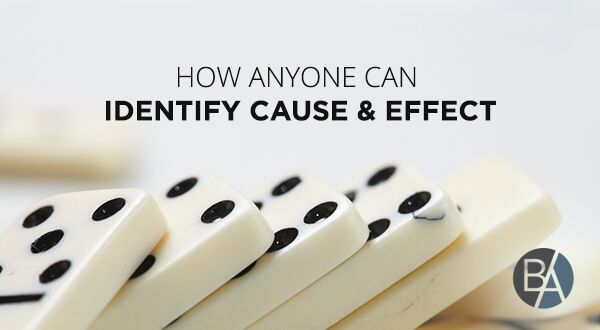Today you hear a lot about companies using “big data” to run their business more effectively and efficiently. After attending the school of hard knocks for a number of years, I discovered that having the right data is only half of the equation!
Retailers especially are trying to watch changing trends in consumer buying patterns (the cause) so they can respond quickly (the effect).
They are using comments said on social media along with other sources and their own data to compare massive and complex amount of data on how and why customers are changing the buying of products and services.
Over 20 years ago after my moving and storage company set up internally a highly successful continuous quality improvement program, I asked two questions:
- How could we expand our quality program externally to our suppliers? (Our suppliers were local moving companies in markets servicing our national long-distance moving business.)
- How could we be the best customer our suppliers have ever had? (I know this sounds counter intuitive.)
While asking myself these questions, I remembered hearing complaints from our suppliers that we were not paying them on-time.
Since we pride ourselves on paying suppliers quickly, I went to our accounting people and asked about the complaints.
After they looked into our accounting system, they found all suppliers were being paid as scheduled and on time per measurable performance goals.
Keep asking questions
Then I went to our billing people to ask them about the complaints.
After they looked into our billing system, they found they were processing the suppliers’ invoices as soon as we received their invoices and setting up the payment rather quickly per measurable goals.
So why were our suppliers complaining?
While I was talking with our billing people, one person said if the suppliers would send in their invoice timely (the cause), they would be paid faster (the effect). Bingo!
Ah-ha, we found the cause!
We immediately began to compare the date when a supplier completed their portion of the moving job and the date we received their invoice.
And to our surprise, it averaged 28 days. WOW!
The solution
Once we started to give our suppliers measurable feedback on the number of days it took for us to receive their invoices, it was amazing how quickly the average number of days came down.
Our suppliers found through our measurable feedback that the slow pay (the effect) was not due to us paying slow but that their invoices were just setting on someone’s desk all month waiting to send at the end of each month (the cause).
This was my first experience in using measurable performance goals to understand cause and effect, and how we could use measurable feedback to solve a complaint/problem or even learn of an opportunity.
Every leader can better understand cause and effect for continuous quality improvement by using measurable performance goals/feedback.
I’ve been writing about how to set performance goals that motivate and inspire your people.
For many years, I would receive regular progress reports on our measurable goals and at times the progress was put in graphs to show if we were trending up or down.
However, I kept asking myself, “So what?” I would ask, “How can this information be more useful and meaningful to our leadership team and to me?”
That is when I became interested in using the progress reports to discover more deeply the cause and effect of the information.
What is cause and effect?
It is similar to Isaac Newton’s third physical law of motion…
“For every action, there is an equal and opposite reaction.”
Cause and effect is a relationship in which one action or event (the cause) makes another event to happen (the effect). One cause could have several effects.
The cause is why it happens. To determine a cause, ask, “Why did this happen?”
The effect is what happens. To identify an effect, ask, “What happened?”
What are the criteria?
There are four criteria:
- The cause has to occur before the effect.
- Whenever the cause happens, the effect must also occur.
- The strength of the cause also determines the strength of the effect.
- The effect is actually due to the cause, rather than to some other event or cause.
What are some examples?
Cause – Jump in the pool. Effect – Get wet.
Cause – You are out of gas. Effect – Your car won’t start.
Would you like to be more effective in solving complaints/problems? How about learning of opportunities? How could you use measurable goals/feedback in your organization? Please leave your comment <here> and share this blog post.

